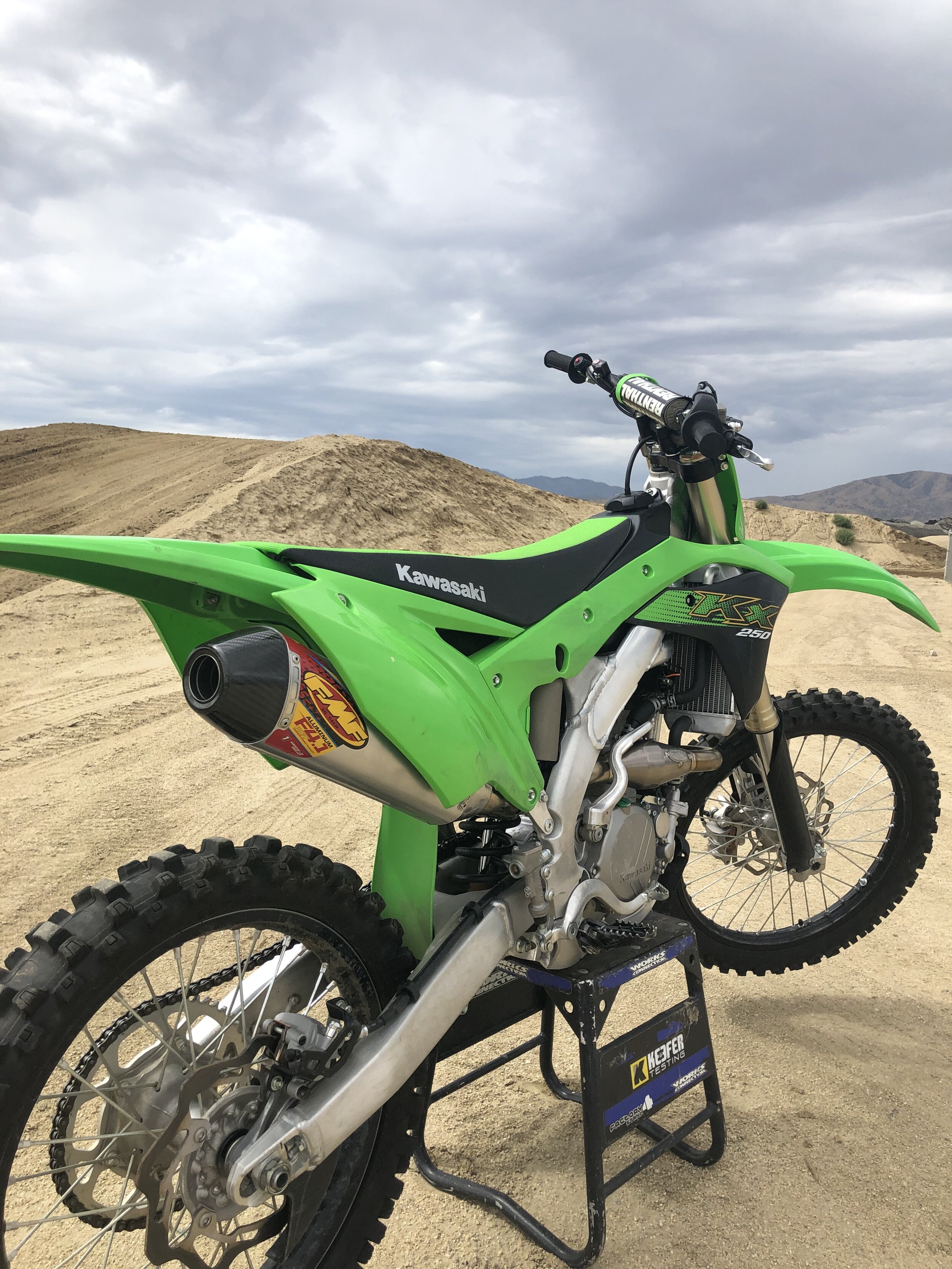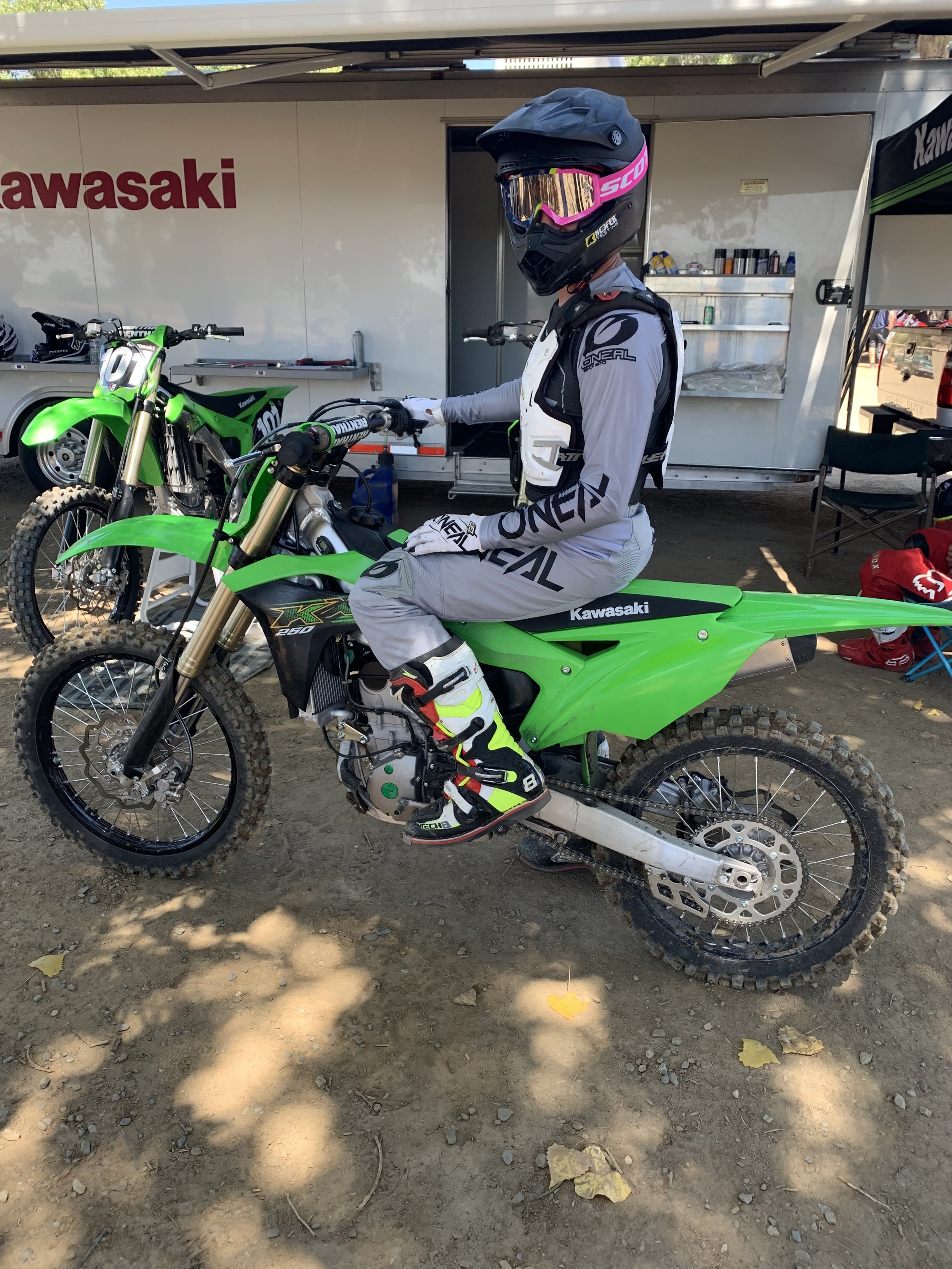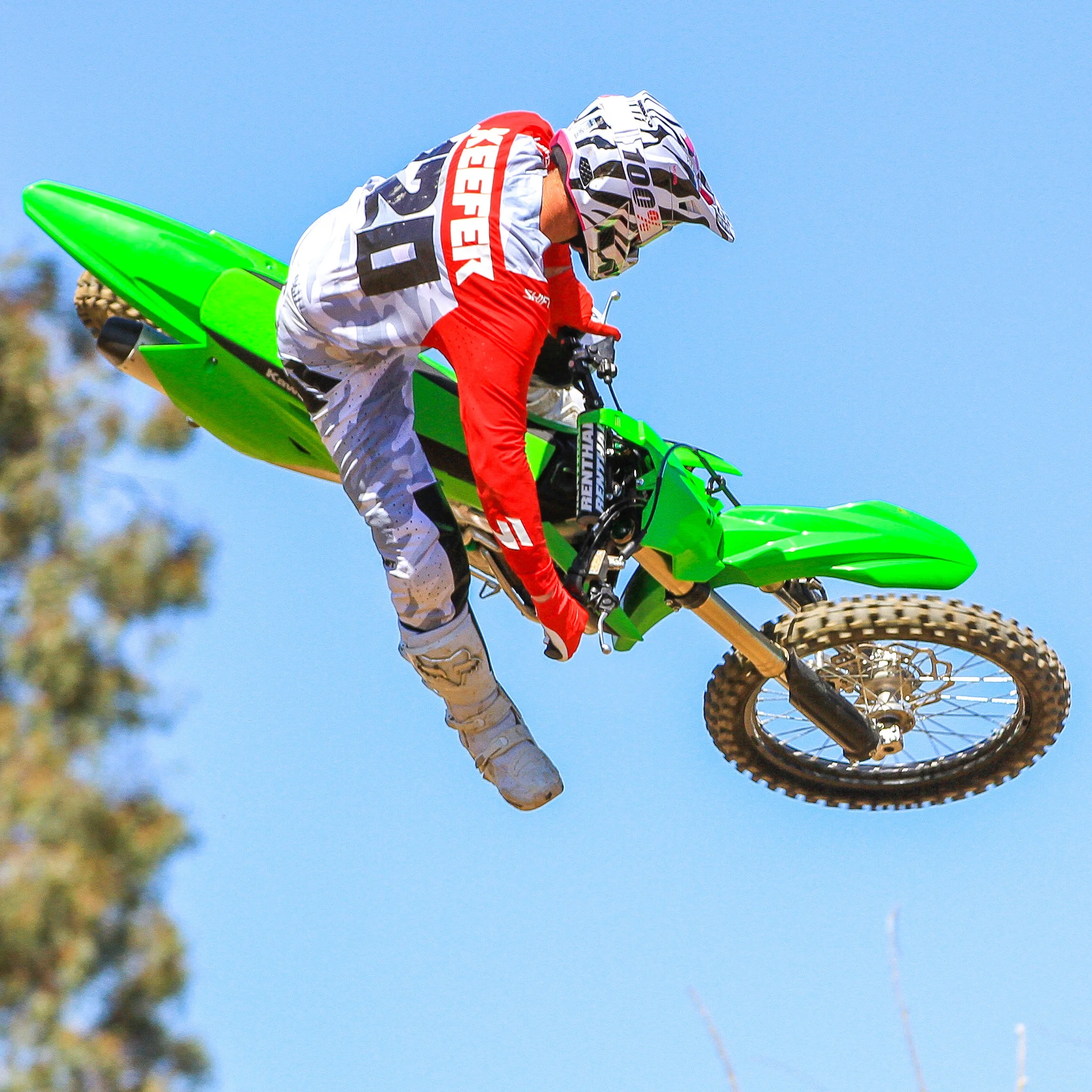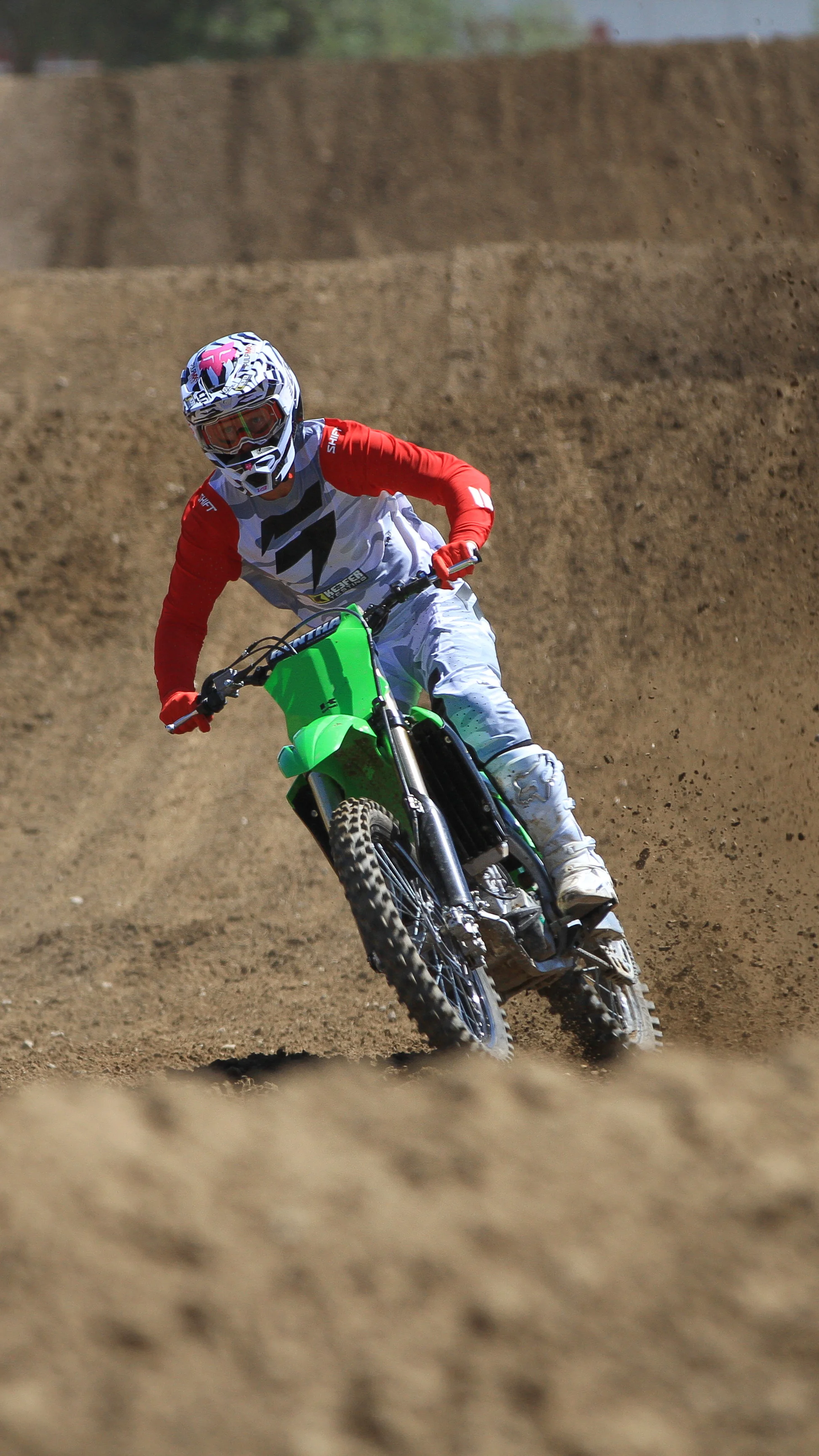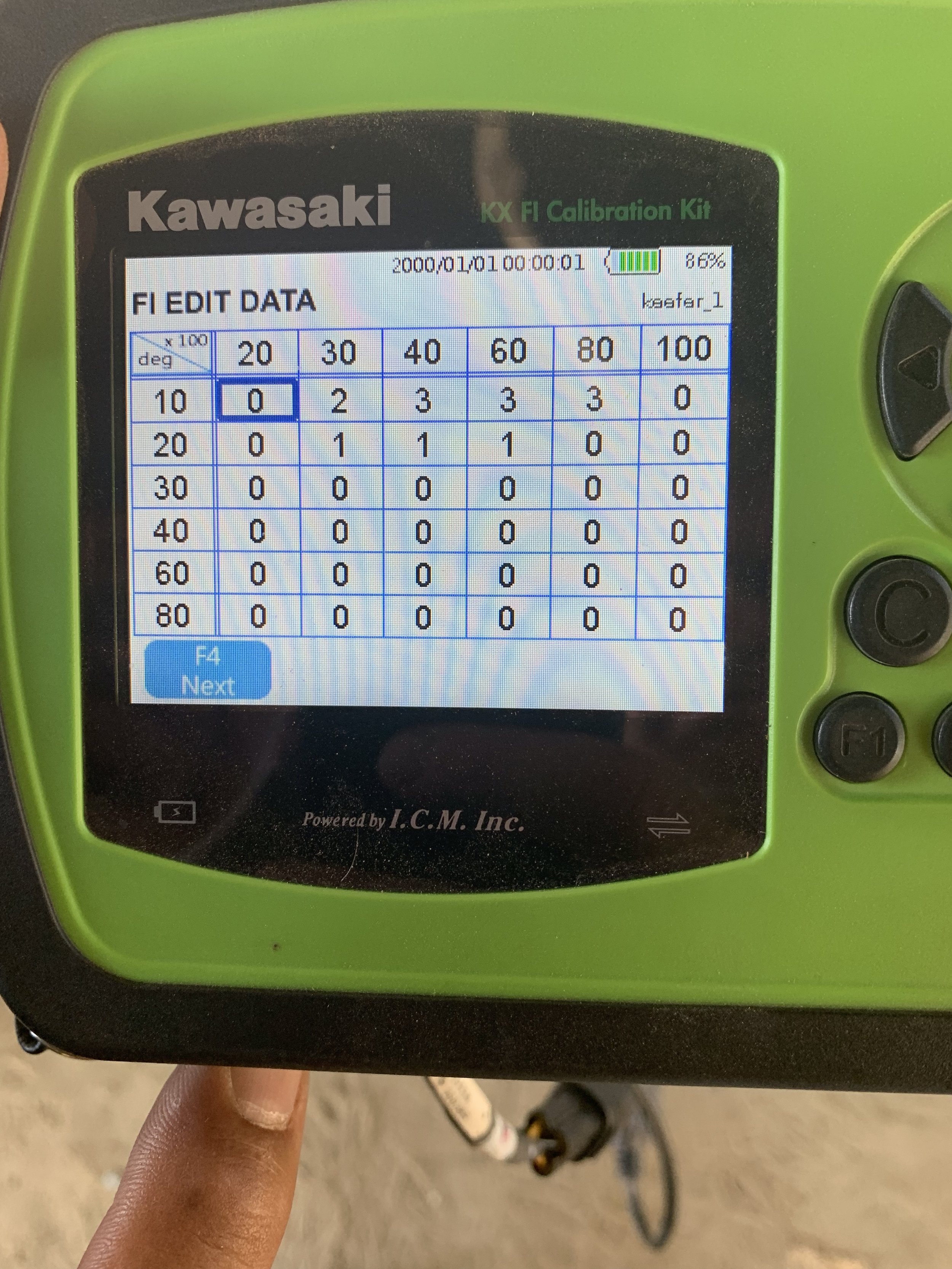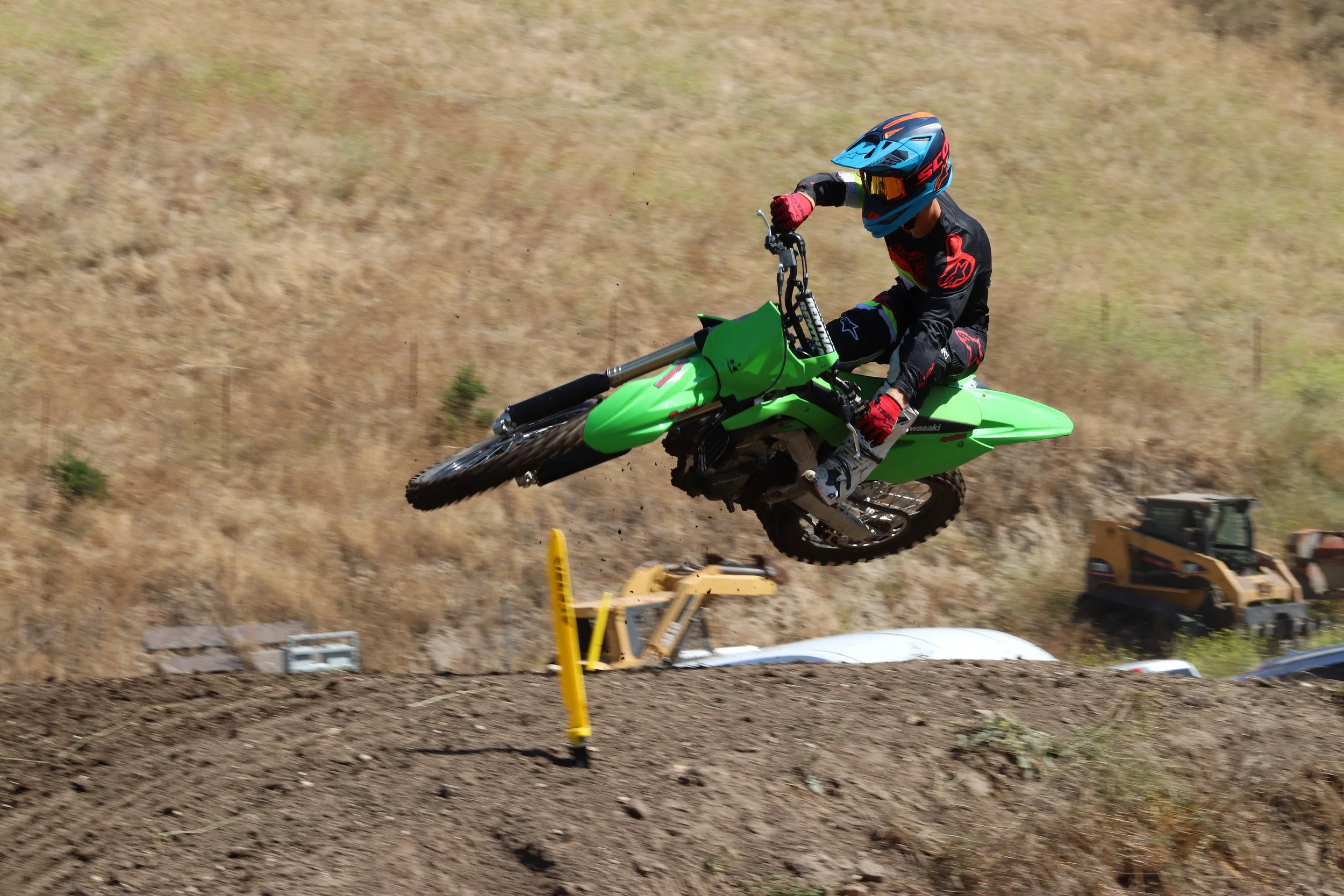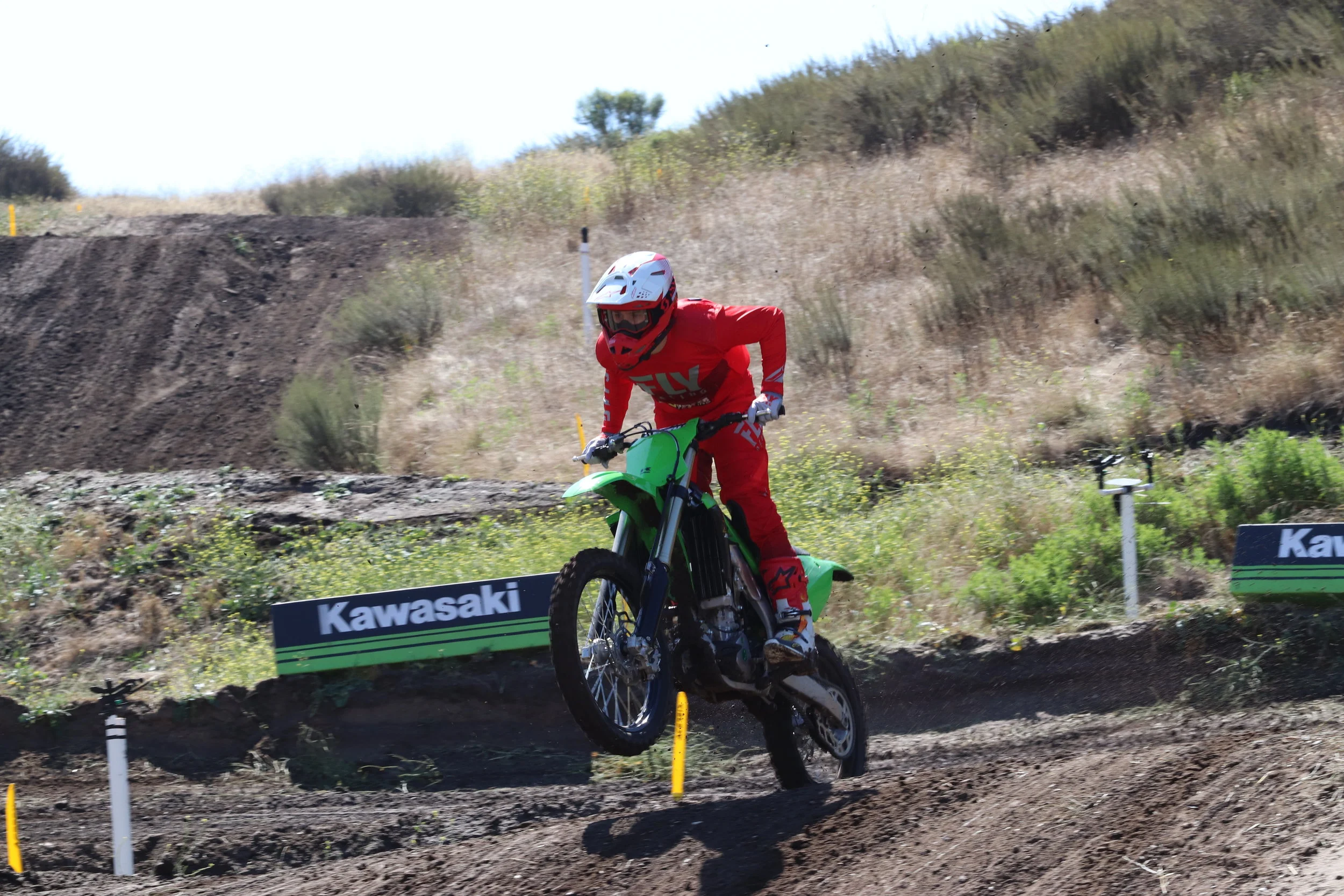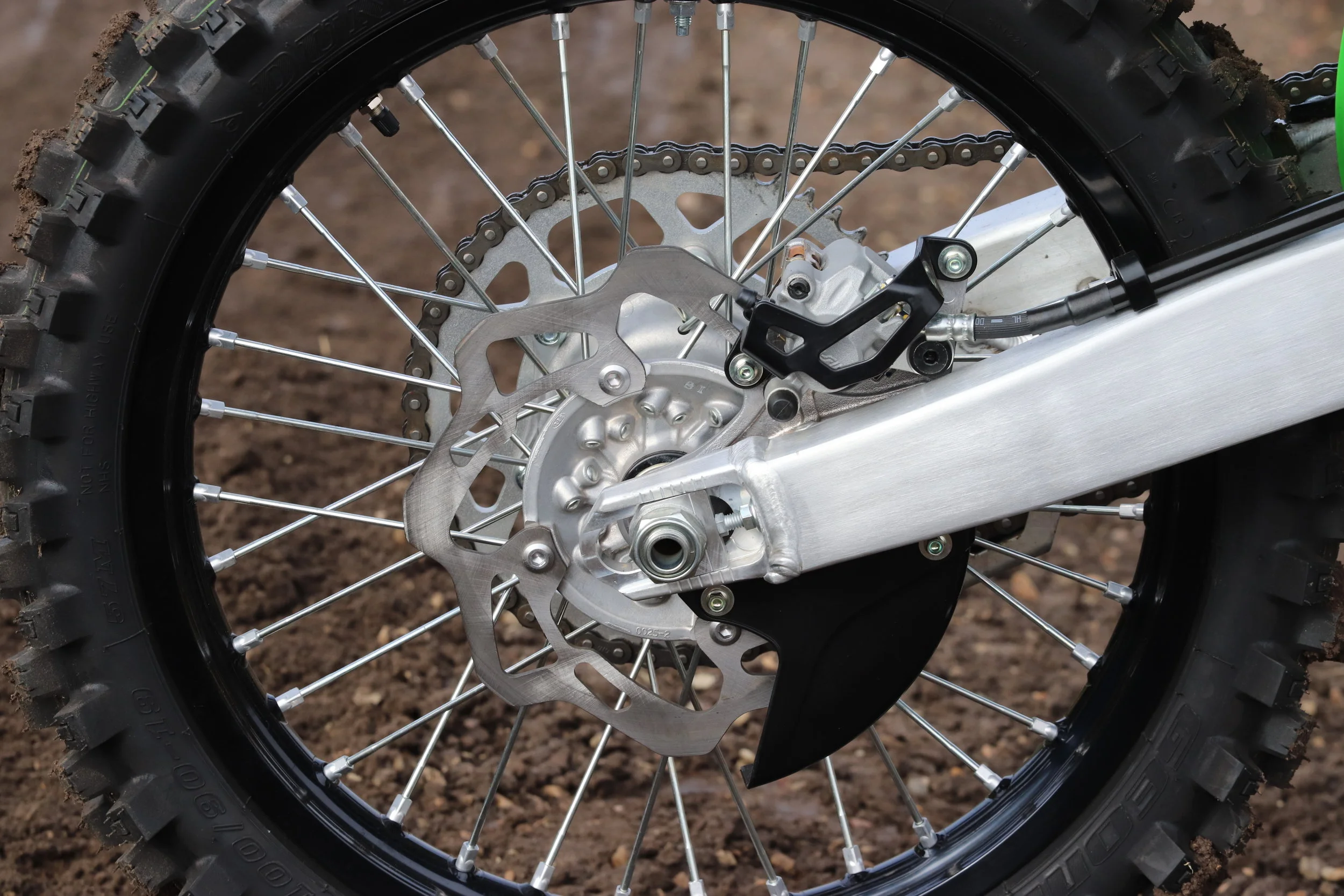Kawasaki did a great job for 2020 on improving the KX250’s overall engine character as well as getting a much better suspension spec. Kawasaki made changes to the engine, went to a bigger throttle body, switched to KYB suspension, updated the brakes, changed the low front engine mounts, and shortened the headpipe by 30mm for 2020. We think they did a great job improving on the 2019 machine, but we have come across 5 fairly simple modifications to help the 2020 become even better. Here they are in no particular order:
1. FMF Stainless Steel/Aluminum 4.1 Muffler System: The FMF Stainless 4.1 system will shed over two pounds off of your KX250, give you more mid range and top end pull, as well as keep the mid-to rpm response that the current stock exhaust comes with. The FMF system will not give you more bottom end pulling power, but going to the ECU map that we provide here will get you some increased low end rpm response with this FMF system. The FMF stainless/aluminum system is more cost effective and will not get as loose in the slip fit joints as a titanium 4.1 system. We tested a couple early versions of this muffler and are impressed with the final production FMF version.
2. ECU Re-Mapping: We used Kawasaki’s Calibration Tool to tweak the fuel and ignition timing in order to try and get some more bottom end out of the 2020 KX250. The 2020 did lose a small amount of low end compared to the 2019, but we are in the market to get some added torque back for 2020. The map you see above will get you some of that torque back when exiting corners while maintaining the excellent mid-top end power that the 2020 comes with. Use the stock green coupler with this ECU setting…
3. Gearing: 13/50 gearing is just fine for the Intermediate to Pro level rider with either the green or white coupler. If you’re a heavier rider that is lazier in corners you can try a 13/51 gearing to help you get back into the meat of the power sooner. We suggest using the green coupler with our preferred ECU setting with the 13/51 gearing however. This will ensure that mid-top end pulling power doesn’t fall off too soon.
4. 110 Rear Tire: A few manufacturers still like to run a 100/90-19 rear tires because it’s lighter. However, the 110/90-19 rear tire offers more traction and has better comfort on square edge, hard pack areas of the track. The 110 doesn't weigh the 2020 KX250 down in deeper soil that much and in fact, I see no negative on the track to going up a size on the rear. The Kawasaki has plenty of mid-top end to carry the small amount of extra weight the 110 carries. You will get more lean angle bite coming out of corners as well as increased stability with the 110. The 110 will fit on your 1.85 rear rim so don’t worry about your standard current rim size with the 110 rear tire sizing. I am currently running a 110/90-19 Dunlop MX33 on the rear of the KX250 with good results in soft to intermediate terrain.
5. Lower Handlebar Bend: The stock 7/8 971 Renthal bar bend feels too tall for the Kawasaki cockpit so I go with a 983 Renthal bend or purchase Ride Engineering’s bar mounts if you want a oversize 1-1/8 handlebar. The 983 7/8 bend has a slightly lower height and rise over the 971, which fits the KX250’s rider triangle better. If you’re going to a oversize bar/bar mount and are looking for a lower profile, go with a Pro Taper EVO/Fuzion SX Race bend.
Bonus Tip: This is not a cost effective mod, but going to a full Hinson clutch kit will help the life of your KX250 clutch. Although the stock clutch feels good at the lever, the clutch does slip after some fairly normal abuse. Accelerating hard out of corners, when there is maximum grip, the stock clutch does slip under load. To prevent this you can get heavier springs, but that will not expand the life of your plates. Going to a full Hinson kit will prevent slipping as well as lengthen the life of your clutch.
If you have any questions please feel free to email me at kris@keeferinctesting.com

